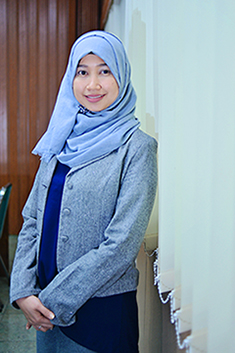Motivasi Berhenti Merokok pada Perokok Dewasa Muda Berdasarkan Transtheoretical Model (TTM)
Downloads
Ardita, H. (2016). Faktor-Faktor yang Mempengaruhi Motivasi Berhenti Merokok pada Mahasiswa Teknik Mesin Universitas Muhammadiyah Yogyakarta Angkatan 2015. Skripsi; Fakultas Kedokteran dan Ilmu Kesehatan Universitas Muhammadiyah Yogyakarta, Yogyakarta.
Cahil, K., Lancaster, T. & Green, N. (2010). Stage-Based Interventions for Smoking Cessation (Review). Chichester: Cochrane Database of Systematic Reviews.
Canadian Cancer Society. (2013). For Smokers Who Want to Quit-One Step at a Time. Kanada: Canadian Cancer Society.
CDC. (2018). What Are the Risk Factors for Lung Cancer by CDC. https://www.cdc.gov/cancer/lung/basic_info/risk_factors.htm. Accessed: 7 Maret 2018.
Diclemente, C., Prochaska, J. O. & Marden, V. M. (1991). The Process of Smoking Cessation: An Analysis of Precontemplation, Contemplation, and Preparation Stages of Change NIAAA Career Development Award: Within-and Post-Session Change Mechanisms in Treatment for Alcohol Use Disorders View project. Journal of Consulting and Clinical Psychology; 59; 295-304.
Etter, J. F. & Sutton, S. (2002). Assessing "Stage of Change” in Current and Former Smokers. Addiction; 97; 1171-82.
Güngörmüs, Z. & Erci, B. (2012). Transtheorethical Model-Based Education Given for Smoking Cessation in Higher School Students. The Southeast Asian Journal of Tropical Medicine and Public Health; 43; 1548-1559.
Hatsukami, D. K., Lindsay, F. S. & Prakash, C. G. (2008). Tobacco Addiction. Lancet; 371; 2027-2038.
Helen, G. St., Neal, L. B., Katherine, M. D., Christopher, H., Margaret, P. & Peyton, J. (2015). Nicotine and Carcinogen Exposure After Water Pipe Smoking in Hookah Bars. Cancer Epidemiology, Biomarkers & Prevention; 23; 1055-1066.
Jacob, P., Abu, R. A. H., Dempsey, D., Havel, C., Peng, M., Yu, L. & Benowitz, N. L. (2014). Comparison of Nicotine and Carcinogen Exposure with Waterpipe and Cigarette Smoking. Cancer Epidemiology, Biomarkers & Prevention; 22; 765-772.
Kementerian Kesehatan RI. (2015). Perilaku Merokok Masyarakat Indonesia. Jakarta: Pusat Data dan Informasi Kementerian Kesehatan RI.
Pickett, W. & Bains, N. (1998). Staging of Adult Smokers According to the Transtheoretical Model of Behavioural Change: Analysis of an Eastern Ontario Cohort. Canadian Journal of Public Health; 89; 37-42.
Prochaska, J. O. & Diclemente, C. (1984). The Transtheoretical Approach: Crossing Traditional Boundaries of Therapy. Florida: Krieger Publishing.
Raju, P., George, R., Ve, R. S., Arvind, H., Baskaran, M. & Vijaya, L. (2006). Influence of Tobacco Use on Cataract Development. British Journal of Ophthalmology; 90; 1374–1377.
Rau, J. (2002). Respiratory Care Pharmacology (6th edition). New York: Mosby Inc.
Robinson, L. M. & Vail, S. R. (2012). An Integrative Review of Adolescent Smoking Cessation Using the Transtheoretical Model of Change. Journal of Pediatric Health Care; 26; 336-345.
Sarbandi, F., Niknami, S., Hidarnia, A., Hajizadeh, E. & Montazeri, A. (2013). The Transtheoretical Model (TTM) Questionnaire for Smoking Cessation: Psychometric Properties of the Iranian Version. BMC Public Health; 13; 1186.
Sieminska, A., Krzysztof, B., Ewa, J., Katarzyna L., Romana, U. & Marta, C. (2008). Patterns of Motivations and Ways of Quitting Smoking Among Polish Smokers: A Questionnaire Study. BMC Public Health; 8; 1-9.
Velicer, W. F, Gregory, J. N., Joseph, L. F. & James, O. P. (1999). Testing 40 Predictions From the Transtheoretical Model. Addictive Behaviors; 24; 455-469.
WHO. (2015). WHO Global Report On Trends In Prevalence Of Tobacco Smoking 2015. Geneva: WHO.
WHO. (2016). Diabetes Country Profile Indonesia. WHO; 48; 18882A–18882B.
WHO. (2018). Heart Disease and Stroke are the Commonest Ways by Which Tobacco Kills People. http://www.searo.who.int/tobacco/data/ino_rtc_reports. Accessed: 27 Maret 2018.
1. The copyright of this journal belongs to the Editorial Board and Journal Manager with the author's knowledge, while the moral right of the publication belong to the author.
2. The formal legal aspect of journal publication accessibility refers to the Creative Commons Attribution-Non-Commercial-Share Alike (CC BY-NC-SA), which implies that the publication can be used for non-commercial purposes in its original form.
3. Every publication (print/electronic) is open access for educational, research, and library purposes. In addition to the objectives mentioned above, the editorial board is not responsible for copyright infringement


.jpg)















